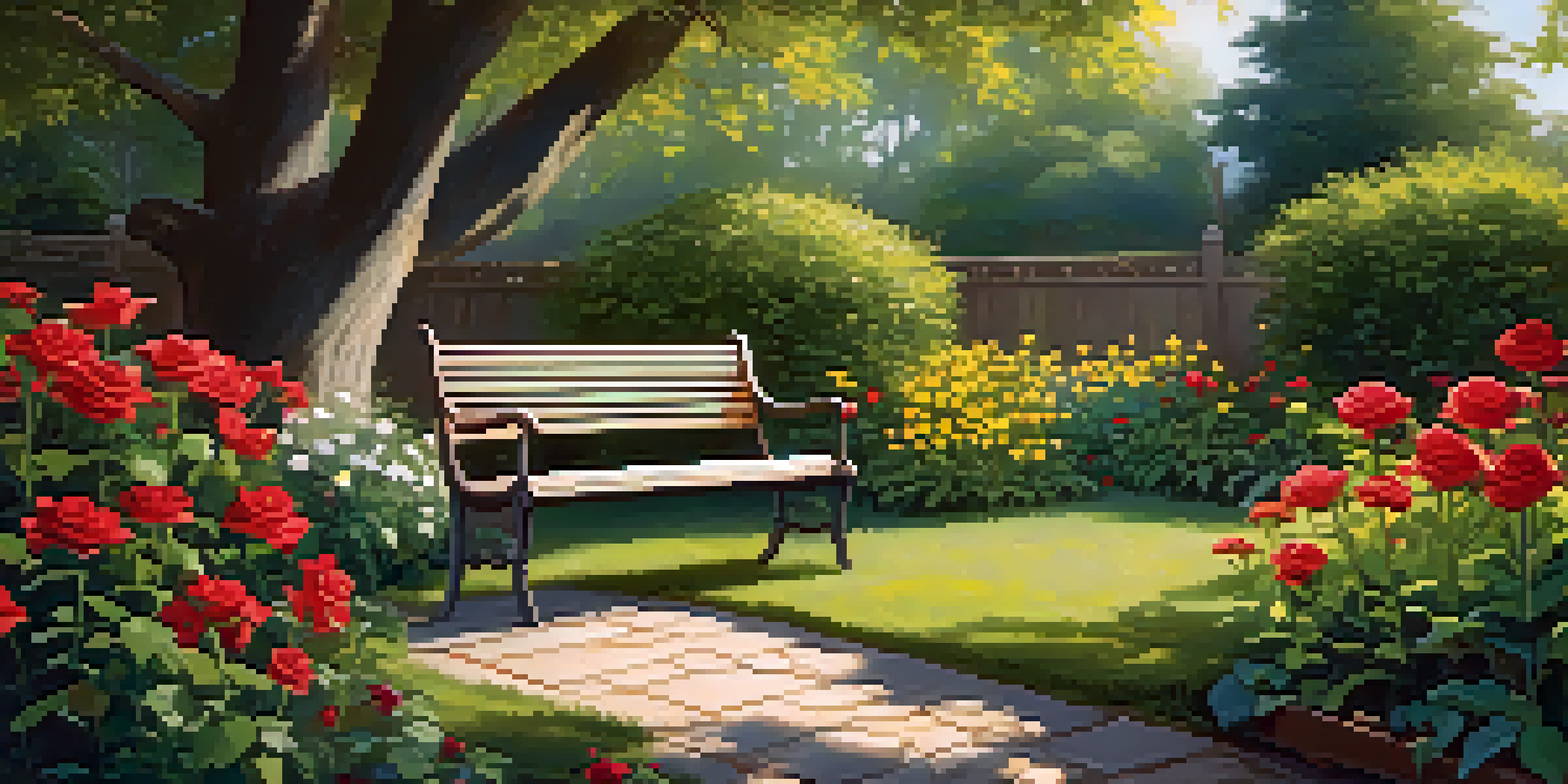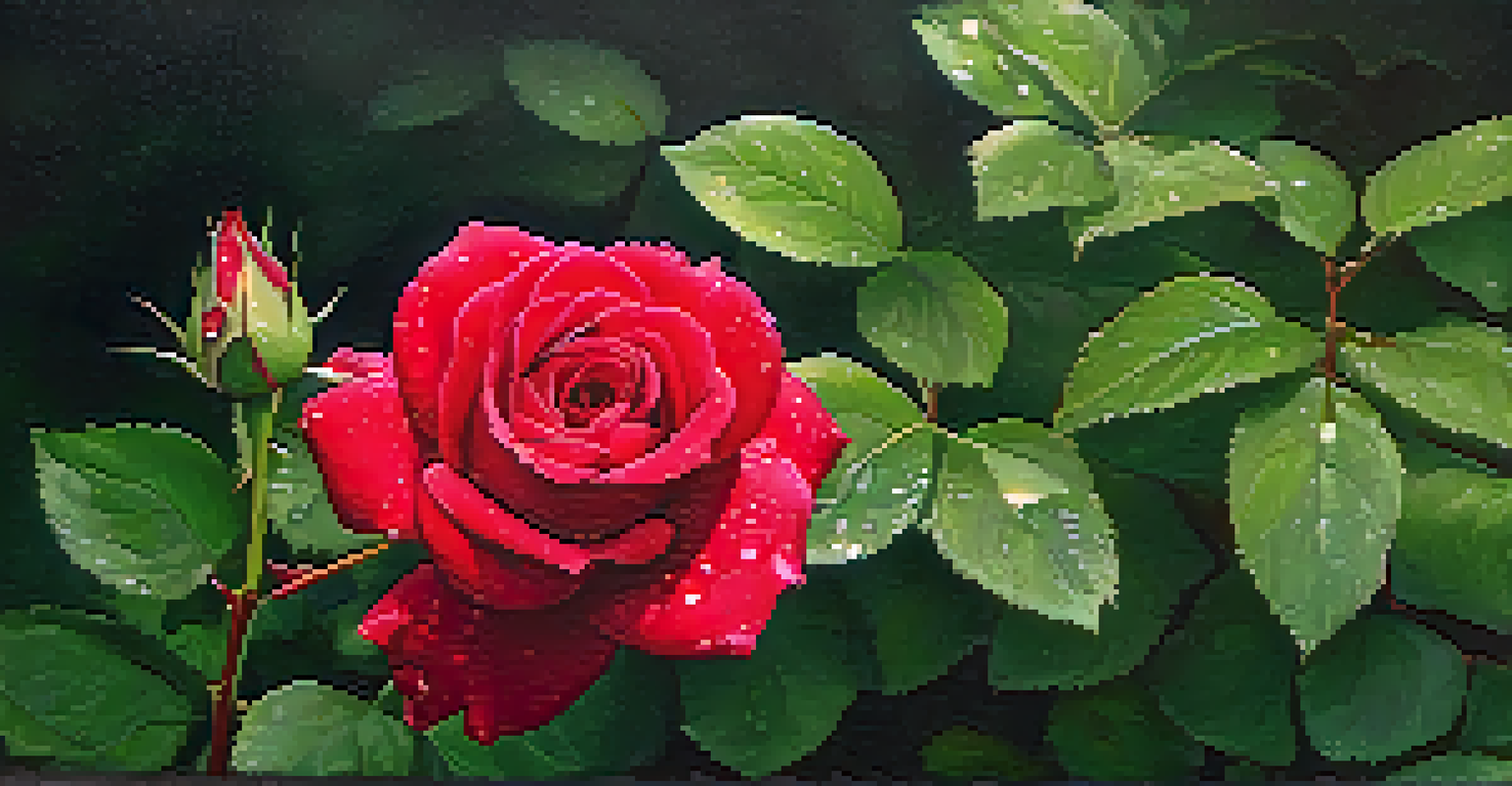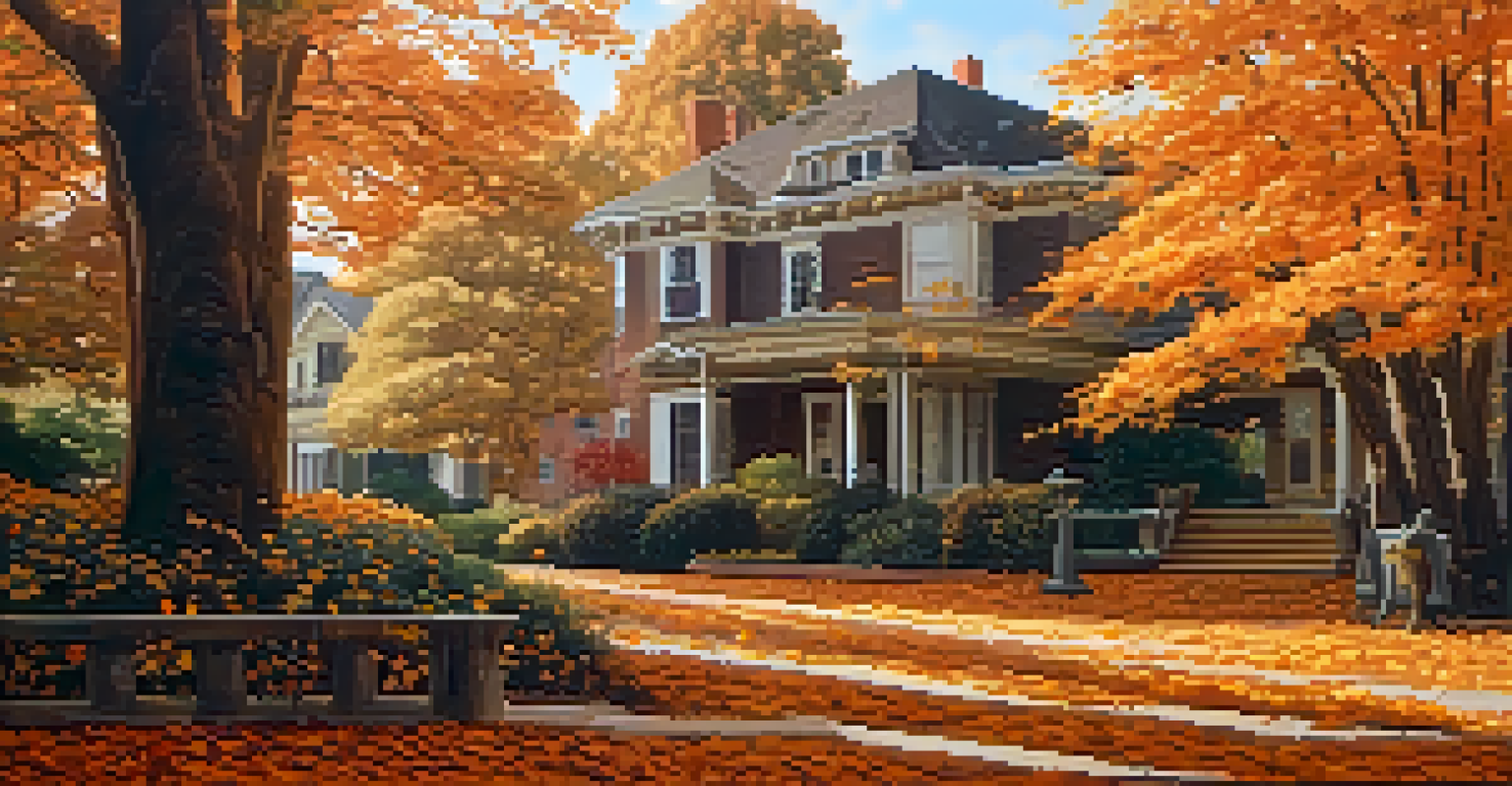Exploring the Symbolism of Flowers in Romantic Poetry

The Role of Flowers in Romantic Poetry
Flowers have long served as powerful symbols in romantic poetry, often representing love, beauty, and transience. Poets like William Wordsworth and John Keats utilized floral imagery to evoke deep emotions and capture fleeting moments. The delicate nature of flowers parallels the ephemeral quality of romance, making them a perfect motif.
A rose by any other name would smell as sweet.
In many poems, flowers act as a bridge between the natural world and human emotions. For instance, a rose might symbolize passionate love, while a daisy may represent innocence and purity. This rich tapestry of meanings allows poets to convey complex feelings through simple floral imagery.
Moreover, flowers also reflect the seasons of love, blooming in spring and wilting in autumn, mirroring the highs and lows of romantic relationships. This cyclical nature of flowers not only deepens the emotional resonance but also highlights the beauty found in both joy and sorrow.
The Language of Flowers: A Deeper Connection
Known as 'floriography', the language of flowers allows poets to communicate emotions without words. Each flower carries its unique meaning, which poets deftly weave into their verses. For instance, a red rose is synonymous with passionate love, while a white lily signifies purity and virtue.

This coded communication enriches the reader's experience, inviting them to explore the deeper significance behind the chosen blooms. By understanding the symbolism, readers can appreciate the subtle nuances and layers of meaning that a single flower can convey within a poem.
Flowers Symbolize Love and Emotion
In romantic poetry, flowers serve as powerful symbols that evoke deep emotions and represent the complexities of love.
As poets select flowers with care, they encourage readers to engage in a more personal interpretation. This interaction between the poet's intent and the reader's perception creates a beautiful dialogue, where flowers become a shared language of love and emotion.
Nature as a Muse: Inspiration from the Garden
Many romantic poets found inspiration in their gardens, where flowers served as both muse and metaphor. The beauty and fragility of a flower can evoke profound feelings, inspiring poets to explore themes of love, longing, and loss. For example, the vibrant colors and scents of a blooming garden can ignite the imagination and stir the heart.
The rose speaks of love silently, in a language known only to the heart.
In addition to serving as inspiration, gardens also represent a safe haven for lovers. They provide a secluded space where feelings can blossom without the interference of the outside world. This sanctuary becomes a recurring setting in romantic poetry, where flowers flourish alongside the tender emotions of love.
Furthermore, the act of tending to a garden mirrors the nurturing aspect of relationships. Just as flowers need care and attention to thrive, so do romantic connections. This parallel reinforces the idea that love, like a garden, requires patience and dedication to flourish.
The Transience of Beauty: Flowers and Impermanence
A powerful theme in romantic poetry is the idea of impermanence, and flowers serve as a poignant reminder of this transient beauty. Poets often reflect on how flowers bloom for a short time, mirroring the fleeting nature of love and life itself. This juxtaposition of beauty and ephemerality deepens the emotional impact of their work.
For instance, the metaphor of a wilting flower can symbolize lost love or the passage of time, prompting readers to reflect on their own experiences with love and loss. This theme invites an exploration of how beauty is often intertwined with sadness, providing a nuanced understanding of romantic relationships.
Floriography Enhances Poetic Meaning
The language of flowers, or floriography, allows poets to communicate emotions in nuanced ways, enriching the reader's experience.
Ultimately, the symbolism of flowers in this context encourages readers to appreciate the moments of beauty amid the inevitable changes life brings. By embracing both the joy and sorrow associated with flowers, poets offer a holistic view of love that resonates with the human experience.
Cultural Variations in Floral Symbolism
Floral symbolism can vary significantly across cultures, adding another layer of depth to romantic poetry. While a rose may universally represent love, other flowers may carry different meanings depending on cultural context. For instance, in some cultures, chrysanthemums symbolize death, while in others, they represent longevity and joy.
This rich tapestry of cultural interpretations allows poets to draw on a vast array of symbols to express their emotions. By incorporating flowers with unique cultural meanings, poets can evoke specific feelings and resonate with diverse audiences. Understanding these variations can enhance our appreciation of romantic poetry.
Additionally, the blending of cultural symbols within poetry encourages a more inclusive interpretation of love and beauty. As poets weave together flowers from different traditions, they create a tapestry that celebrates the universality of human emotions, transcending cultural boundaries.
Iconic Poems Featuring Floral Imagery
Many iconic romantic poems prominently feature floral imagery, showcasing its enduring significance in literature. For example, Robert Burns' 'My Love is Like a Red, Red Rose' uses the rose as a central symbol of undying love. This poem exemplifies how a simple flower can evoke powerful emotions and resonate across generations.
Similarly, in 'To Autumn', John Keats uses flowers to celebrate the richness of the season, intertwining themes of beauty, decay, and the passage of time. The vivid descriptions of blooming flowers and ripening fruit create a sensory experience that captures the essence of romantic longing.
Impermanence Reflected in Poetry
Flowers embody the transient nature of beauty and love, reminding readers of the fleeting moments that define human experiences.
These poems highlight how floral imagery can evoke a range of emotions, from joy to melancholy. By examining these works, readers gain insight into the multifaceted role that flowers play in expressing the complexities of love.
The Lasting Impact of Floral Symbolism in Poetry
The symbolism of flowers in romantic poetry has left an indelible mark on literature and culture. Poets have not only used flowers to convey personal emotions but have also influenced how we perceive and express love in our own lives. The legacy of floral symbolism continues to inspire new generations of writers and lovers alike.
Moreover, the connection between flowers and emotions transcends poetry, finding its way into everyday language and expressions. Phrases like 'picking a flower' or 'a budding romance' illustrate how deeply ingrained floral imagery is in our collective consciousness.

As we continue to explore the symbolism of flowers, we enrich our understanding of love and beauty in all their forms. This timeless connection between flowers and human emotions ensures that their significance will endure in literature and beyond.